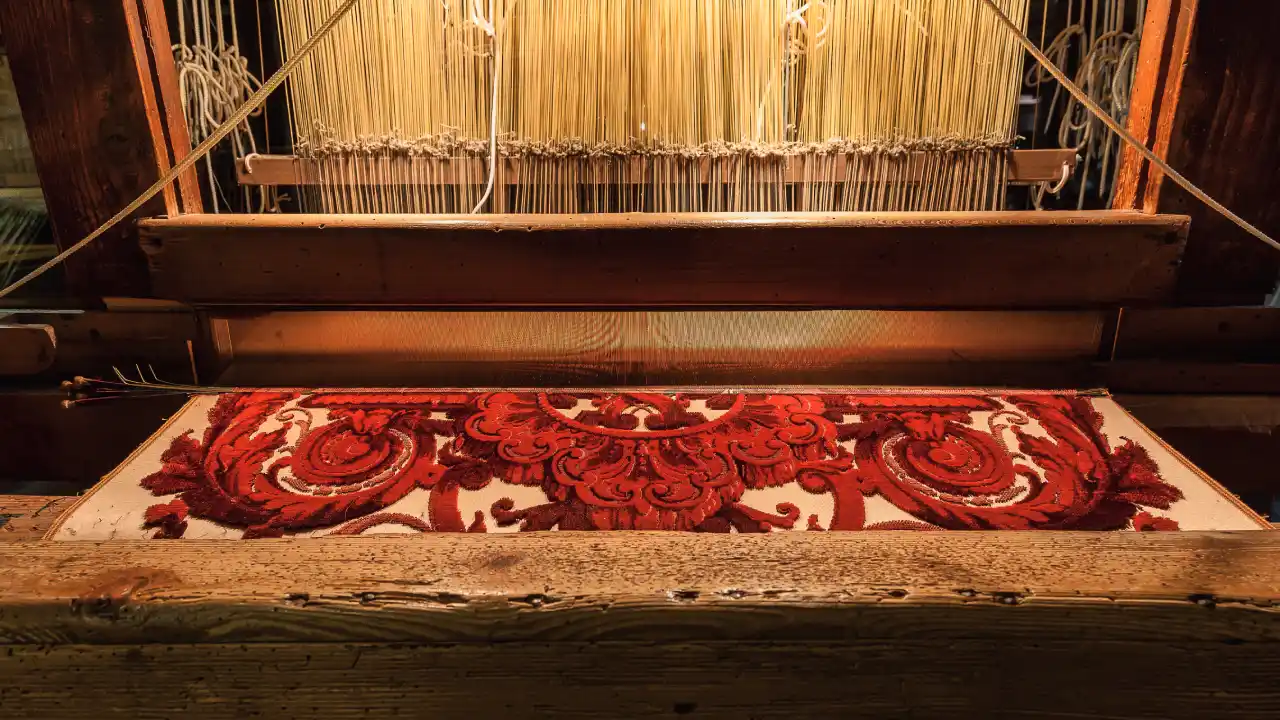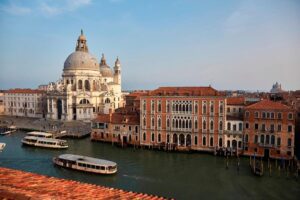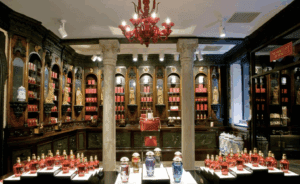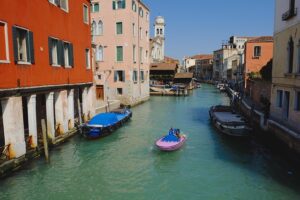Venice Made by Hands: Discover Murano Glass, Burano Lace & Venetian Masks with Real Artisans
Venice is more than a postcard of gondolas and sunsets. It’s a city built by hands — by artisans who, for over a thousand years, have turned raw materials into beauty. Glass glowing like captured fire. Lace so fine it seems spun from air. Masks that hide faces but reveal stories.
These crafts are not just souvenirs; they’re living heritage — fragments of Venice’s identity. Every piece of glass, every lace stitch, every gilded mask carries the weight of centuries: trade with the East, Renaissance opulence, Carnival intrigue, and family secrets passed from master to apprentice.
But here’s the truth: authentic Venetian craftsmanship is disappearing. Flooded by mass-produced imitations, many historic workshops are fighting to survive. That’s why, if you truly want to understand Venice, you need to go beyond the tourist shops — and step into the real studios where creation still happens by hand.
Tour Leader Venice opens those doors for you. Our private, insider-only experiences connect you directly with the artisans who keep Venice’s soul alive — from glowing Murano furnaces to lace tables in Burano and hidden mask ateliers in quiet Venetian courtyards.
🔥 Part 1 — Murano Glass: Where Fire Becomes Art
1.1 The Birth of a Legend
In 1291, Venice made a decision that would change art history forever: all glass furnaces were moved from the main islands to Murano. Officially, it was to prevent fires; secretly, it was to protect trade secrets. Murano became Europe’s first high-tech district — a medieval Silicon Valley of molten color and innovation.
From these furnaces came techniques that dazzled the world:
- Cristallo — the first perfectly transparent glass, clearer than anything seen before.
- Filigrana — delicate white glass threads twisted into elegant patterns.
- Avventurina — glass laced with copper crystals that sparkle like starlight.
- Murrine — colorful canes cut into tiny mosaics, forming intricate designs.
Venetian glass became a currency of prestige. Kings, sultans, and popes ordered chandeliers and goblets made only in Murano. Even Versailles shimmered with its reflections.
1.2 Why Murano Still Matters
Seven hundred years later, Murano’s furnaces still burn — but only a handful of master glassmakers remain. Every authentic piece you see here is the result of skill, teamwork, and time.
- The furnaces blaze at over 1,200°C (2,190°F).
- Each workshop functions like a symphony — a maestro shapes, assistants reheat, others cut or blow.
- Every movement counts; a few seconds too slow, and the glass turns solid.
When you hold a genuine piece of Murano glass, you’re holding centuries of technique, passed from one Venetian family to another — a legacy of light frozen in time.
1.3 Visiting Authentic Murano Studios
Most tourists see Murano through factory showrooms that focus on sales, not storytelling. But to witness the real art, you need to step behind the curtain — into the furnaces where families still craft glass as their ancestors did.
On our Murano Workshop & Visit experience, you’ll:
- Watch a master shape glowing glass straight from the fire.
- Visit private studios run by true Venetian families — not commercial brands.
- Meet artisans who create murrina beads and fine engravings entirely by hand.
- Learn to recognize authentic Murano marks and avoid imported imitations.
Imagine standing by the furnace as a bubble of molten glass turns into a vase — the heat on your face, the glow reflecting in the master’s eyes. That’s Murano’s soul.
🔥 Explore Murano & the Venetian Lagoon with a Private Guide →
🧵 Part 2 — Burano Lace: Thread Woven Into Air
2.1 The Legend of Lace
Across the lagoon, the island of Burano glows with colors — pink, blue, yellow, green — but its most precious art is almost invisible. According to legend, a fisherman resisted a siren’s temptation at sea; as a reward, his fiancée received a veil made of sea foam. Inspired, Burano’s women began creating lace as delicate as water itself.
By the 16th century, Burano lace was Europe’s obsession. It adorned royal gowns, papal robes, and wedding veils from Paris to Vienna. Entire fortunes were made with needle and thread.
2.2 The Art of Making Burano Lace
True Burano lace has no machines, no shortcuts — only patience.
- Each design is divided into micro-sections, stitched by hand.
- Artisans use nothing but a needle, linen thread, and a paper pattern.
- A single piece — a tablecloth, for instance — can take months or even years.
The result? A masterpiece so fine it seems alive, almost breathing. Collectors call it “lace made of light.”
2.3 Visiting Burano’s Living Workshops
Today, mass-produced lace made overseas threatens Burano’s tradition. Many shops on the island display imported fabrics — beautiful but not real.
Our Hands-On Workshops and local connections bring you straight to the true artisans:
- Visit the Lace Museum and see historical pieces from the 16th to 19th centuries.
- Meet women who still stitch at home, following ancient techniques.
- Watch generations — grandmother, mother, and daughter — sewing together at the same table.
- Learn how to distinguish authentic lace from machine copies.
That moment — three generations, one thread — is what keeps Burano’s heart beating.
🧶 Discover Venetian Textile & Lace Traditions →
🎭 Part 3 — Venetian Masks: Secrets of Carnival
3.1 The Origins of the Mask
Venetian masks were never just costumes. In the Republic’s golden age, masks meant freedom — and sometimes danger.
- Nobles and commoners mingled anonymously in taverns and theaters.
- Merchants negotiated secret deals face-to-face, unseen.
- Lovers met behind disguise, escaping gossip and scandal.
The Bauta (white mask with cloak) was a symbol of power and anonymity. The Medico della peste (plague doctor with the beak) became Venice’s dark emblem — a reminder of survival and superstition.
3.2 The Art of Making a True Venetian Mask
Real Venetian masks are not plastic. They are handcrafted from papier-mâché, then gilded, painted, and decorated with gold leaf, feathers, or jewels.
- Artisans shape each mask using traditional molds.
- They glue and press layers of paper, dry them, and harden the form.
- Then comes painting — intricate, symbolic, and unique.
No two masks are ever identical — each carries the handprint of its maker.
3.3 Visiting Mask Studios & Workshops
Most souvenir shops sell imported plastic imitations. But the real ateliers are tucked in quiet alleys — family-run studios where every mask tells a story.
On our Venetian Mask Workshop, you’ll:
- Visit historic studios run by true Venetian artisans.
- Learn the difference between traditional and fantasy masks.
- Hear how each design connects to Venetian history and Carnival rituals.
- Paint your own mask — and take home a piece of Venice you made yourself.
Imagine creating your own Carnival mask by hand — then wearing it that same evening to a private ball under flickering lanterns.
🎭 Create Your Own Venetian Mask with a Local Artisan →
🗝️ Part 4 — Why You Shouldn’t Go Alone
4.1 The Reality of Tourist Traps
Without a local guide, most visitors end up in shops selling imported goods at inflated prices. Many leave thinking they’ve bought “Murano glass” or “Burano lace” — when in fact, they’ve purchased factory-made replicas from abroad.
4.2 The Insider Advantage
Tour Leader Venice gives you access that money alone can’t buy:
- Private entry to authentic workshops normally closed to tourists.
- Face-to-face time with masters — not sales clerks.
- Behind-the-scenes demonstrations of work in progress.
- Stories of families who have shaped Venice’s culture for generations.
When you travel with us, you don’t just see Venetian art — you meet the people who make it.
💎 Part 5 — Craftsmanship as Living Culture
Venetian craftsmanship is not a museum piece. It’s alive — a heartbeat running through the city’s veins.
- Glass masters still guard secret formulas known only to a few families.
- Lace-makers still stitch for hours in the quiet rhythm of tradition.
- Mask-makers still prepare each winter for Carnival, guided by passion, not profit.
Every time you visit an authentic studio, you’re not just watching — you’re preserving culture. Each purchase from a real artisan is a vote for Venice’s future.
💠 Support Authentic Venetian Craftsmanship →
🧭 Part 6 — Planning Your Artisan Journey
6.1 Murano
- Visit in the morning to see furnaces alive with fire.
- Combine it with Burano & Torcello for a full lagoon experience.
- Allow time to explore canals lined with colorful glass studios.
6.2 Burano
- Perfect for photos, lace discovery, and a quiet stroll.
- Pair with a visit to Torcello — the ancient heart of Venice’s origins.
6.3 Venice (Masks & Artisans)
- Mask ateliers are scattered across San Polo, Dorsoduro, and Castello.
- Workshops can be arranged year-round, customized to your interests.
🧭 Explore All Venice Artisan & Cultural Tours →
🤝 Part 7 — Why Choose Tour Leader Venice
We’re not just guides. We’re locals who believe Venice deserves better than mass tourism. Our tours are 100% private — crafted for travelers who want authenticity, intimacy, and depth.
- Authenticity: Only verified, Venetian-owned workshops.
- Access: Private entrances, artisan meetings, real work in progress.
- Storytelling: Every stop comes alive with history, legends, and laughter.
- Customization: Choose between glass, lace, masks, or combine them all for a day of art and inspiration.
With Tour Leader Venice, you don’t just observe the city — you become part of its living story.
✨ Conclusion — Venice Made by Hands
Venice isn’t only built on water — it’s built on craftsmanship. From glowing glass to delicate lace and painted masks, every creation tells the story of a city that turned raw elements into wonder.
But these arts are fragile. They survive only through the hands — and hearts — of those who continue them today. To truly experience Venice, go beyond the souvenir shops. Step inside the studios where the city is still being made, piece by piece, by people who love it fiercely.
Let us take you there. Let us show you the Venice that still works by hand.
🎨 Book Your Private Artisan Experience with Tour Leader Venice →
How can I tell if Murano glass is authentic?
Real Murano glass is handmade on the island of Murano by skilled artisans using centuries-old techniques. Each piece shows tiny variations in color, bubbles, or texture — signs of its authenticity. Genuine studios often display the Vetro Artistico® Murano trademark. To be sure, visit verified workshops like those featured in our Murano Workshop & Visit — Discover the Art of Glassblowing experience, where you meet true glass masters at work.
Is Burano lace still made by hand?
Yes — but only by a few remaining women on the island of Burano who continue the craft using needle, thread, and centuries of tradition. Each design is divided into micro-sections and stitched entirely by hand, often taking months to complete. Machine-made lace sold in souvenir shops may look similar, but authentic Burano lace has an unmistakable delicacy and irregularity. You can see it yourself during our Venetian Textile & Lace Traditions Tour.
Where can I join a real Venetian mask workshop?
The most authentic Venetian mask ateliers are hidden in San Polo, Dorsoduro, and Castello — family studios where masks are still crafted from papier-mâché and hand-painted. Visitors can learn traditional techniques and paint their own mask during our Create Your Own Masterpiece — Venetian Mask Workshop. It’s a creative and unforgettable way to connect with Venice’s Carnival heritage.







